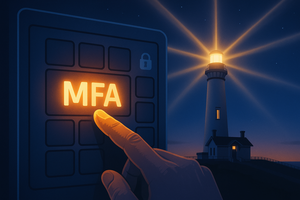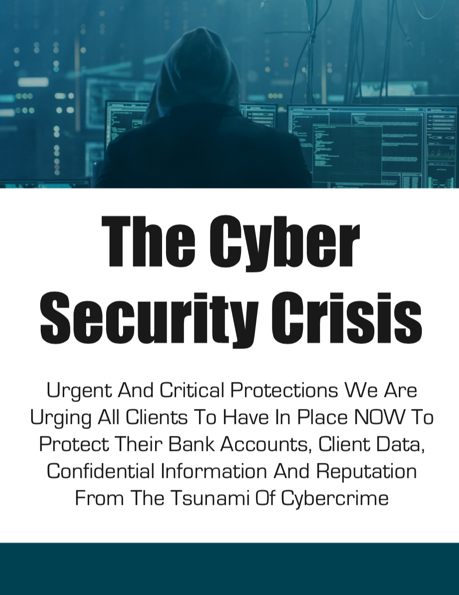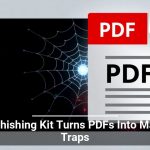 You wouldn’t drive without a seat belt. You wouldn’t leave your office unlocked overnight.
You wouldn’t drive without a seat belt. You wouldn’t leave your office unlocked overnight.
So why go online without multi-factor authentication (MFA)?
In a world where passwords are regularly stolen, guessed, or phished, MFA adds an extra layer of protection—one that can mean the difference between a close call and a full-scale breach.
Think of it as a second lock on your digital door, one that protects your nonprofit’s data, donors, and mission when your first lock (your password) fails.
One Step That Makes All the Difference
If your password is the lock on the front door, MFA is your alarm system. You might not need it every day—but you’ll be glad it’s there when something goes wrong.
MFA adds a brief verification step, like entering a text code, approving a push notification, or confirming a fingerprint scan. The goal is simple: prove it’s really you before granting access.
No matter what it’s called—two-factor authentication, two-step verification, or one-time password—the outcome is the same: stronger protection, less liability.
That one extra click can stop a hacker in their tracks.
How MFA Protects You from Cyber Liability
Skipping MFA doesn’t just make your systems easier to break into—it exposes your organization to cyber liability that can threaten your funding, operations, and reputation.
When an attacker gets in, the damage goes far beyond lost passwords:
- Business risk: downtime, data recovery, and lost productivity.
- Legal risk: potential breach notifications and lawsuits.
- Regulatory risk: funder or insurance compliance failures.
- Operational risk: shaken donor confidence and public trust.
The numbers speak for themselves. Microsoft reports that enabling MFA reduces the risk of account compromise by over 99.2%—and by 99.99% for accounts that use it consistently.
Real-Life Moments Where MFA Saves the Day
Here’s what happens when MFA works exactly as it should:
A staff member clicks a phishing link and unknowingly gives up their password. When the attacker tries to log in, an MFA prompt appears. The employee gets a notification they weren’t expecting and alerts IT.
Crisis avoided.
That one second of hesitation—thanks to MFA—just saved the organization from data theft, downtime, and liability exposure.
MFA doesn’t just block hackers. It gives you time, visibility, and control before small mistakes become expensive lessons.
Where to Use MFA First
You don’t need to roll MFA out everywhere at once—start where it matters most:
- Banking and financial platforms
- Email and cloud storage accounts
- Donor and client management systems
- Social media and fundraising portals
Most platforms already include MFA options. You simply need to enable them. Authenticator apps like Microsoft Authenticator, Google Authenticator, or Duo make it fast and seamless.
A few minutes of setup today could prevent weeks—or years—of damage control later.
Simple Steps, Serious Protection
MFA isn’t just about technology. It’s about protecting what you’ve built.
It’s one of the simplest, most cost-effective ways to reduce your cyber liability across business, legal, regulatory, and operational fronts.
It strengthens your insurance posture, builds board confidence, and proves to donors that your organization takes stewardship seriously.
One small step, one big safeguard for your mission.
Ready to Lock the Door on Risk?
Cybersecurity doesn’t have to be confusing—or reactive. You don’t need to navigate the storm alone.
👉 Begin with a Complimentary Cyber Risk Assessment today: https://mtsconsultinggroup.net/riskassessment
It’s not a sales pitch. It’s a guided, plain-language conversation that helps you understand your current risks, reduce your liability, and protect what matters most—your mission and the people who depend on it.
Because once you understand the storm, you can navigate it with confidence.



